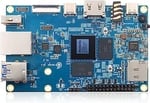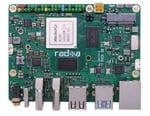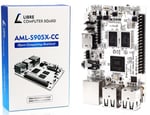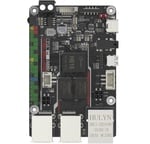There are plenty of reasons one might consider other options besides Raspberry Pi when a single-board computer (SBC) is needed.
From 2020 to 2023 there was a severe chip shortage, and Raspberry Pi 4 boards became very difficult to obtain (without paying exorbitant scalper pricing). This situation pushed many to look for alternative SBCs to power their projects, and the market blossomed.
Many of these alternative SBCs had been around before the Raspberry Pi shortage, but there was a marked increase in competition, which is good for the consumer. Now that there are many different options out there with different feature sets and price points, it can be somewhat overwhelming when trying to decide what board is best for you.
The Raspberry Pi 5 was released in late 2023, and, compared to the Pi 4, it offers more computing power, has a slightly different hardware layout, and a generally higher performance. With a price tag of ~$80 (board only), it’s not the most expensive SBC you’ll find, but it’s also not the cheapest. And while it’s got plenty to offer, maybe it’s not quite right for your project.
So, we’ve compiled a list of Raspberry Pi 5 alternatives (listed in no particular order) that you may want to consider before adding anything to your shopping cart. Let’s take a look!
Orange Pi 5
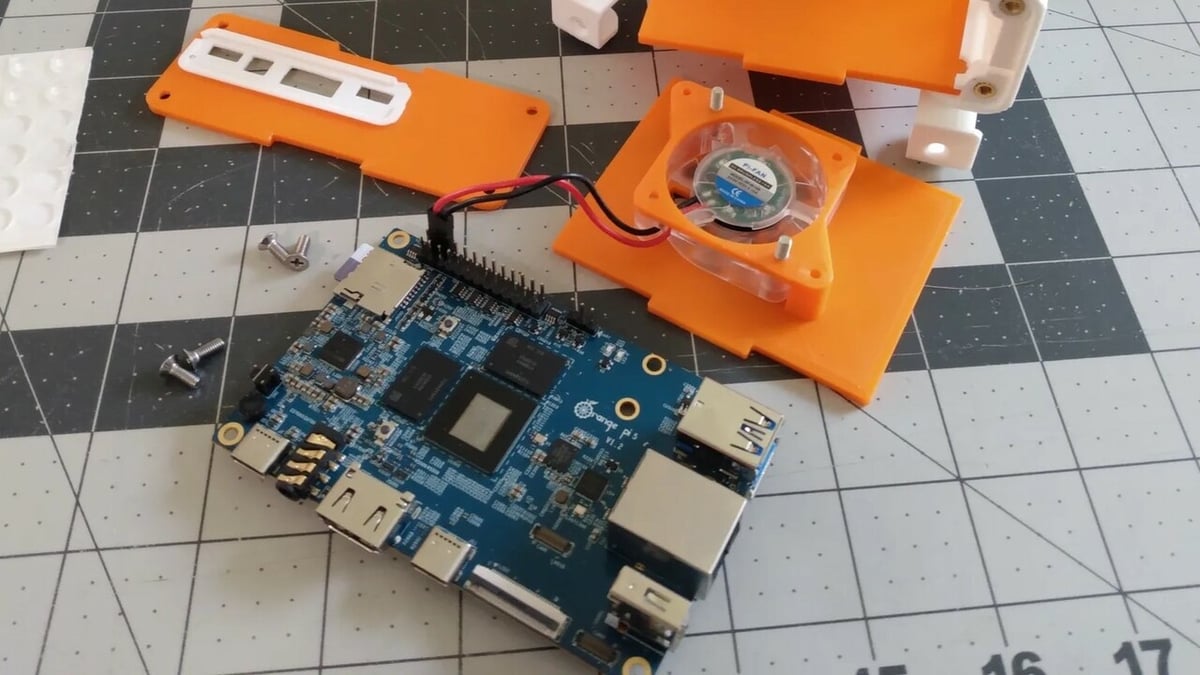
The Orange Pi series is one of the most well-known alternative to Raspberry Pi. They have a similar size and form factor to the Raspberry Pis, but aren’t identical in their layout or GPIO, so they aren’t cross-compatible as far as cases or HATs go. This isn’t too much of a problem though, as there are many accessories available for the Orange Pi line of SBCs. And while the Orange Pis don’t have quite as many users as Raspberry Pi, there’s a growing community to help out with configuration and troubleshooting.
While the line includes the Orange Pi 800 (competing with the Raspberry Pi 400), when it comes to the Pi 5, the Orange Pi 5 features a Rockchip RK3588S 8-core processor, and the ability to be configured with up to 16 GB of DDR4 RAM. This gives the Orange Pi 5 a leg up over the Raspberry Pi 5, at least as far as RAM goes. The Raspberry Pi 5 is only available in 4 and 8 GB models at time of writing.
This extra RAM would be helpful for applications such as physics simulations with lots of data and many variables to juggle at once, or perhaps a semi-autonomous robotics project where a complicated control loop or motion planning is needed. And if the Pi 5 doesn’t offer enough power for your project, there’s also the Orange Pi 5 Plus.
- Specs: Rockchip RK3588S 8-core processor, up to 16 GB DDR4 RAM
- Features: Integrated ARM Mali graphics, full-size HDMI 2.1 port, PCIe 2.0 M.2 slot, Gigabit Ethernet, 1x USB 3.0 port, 2x USB 2.0 ports, 1x USB 3.1 Type-C power input, MIPI/CSI camera connector, 26-pin GPIO header, 3.5-mm audio jack
- Price: ~$100 (8 GB)
Radxa Rock 5B
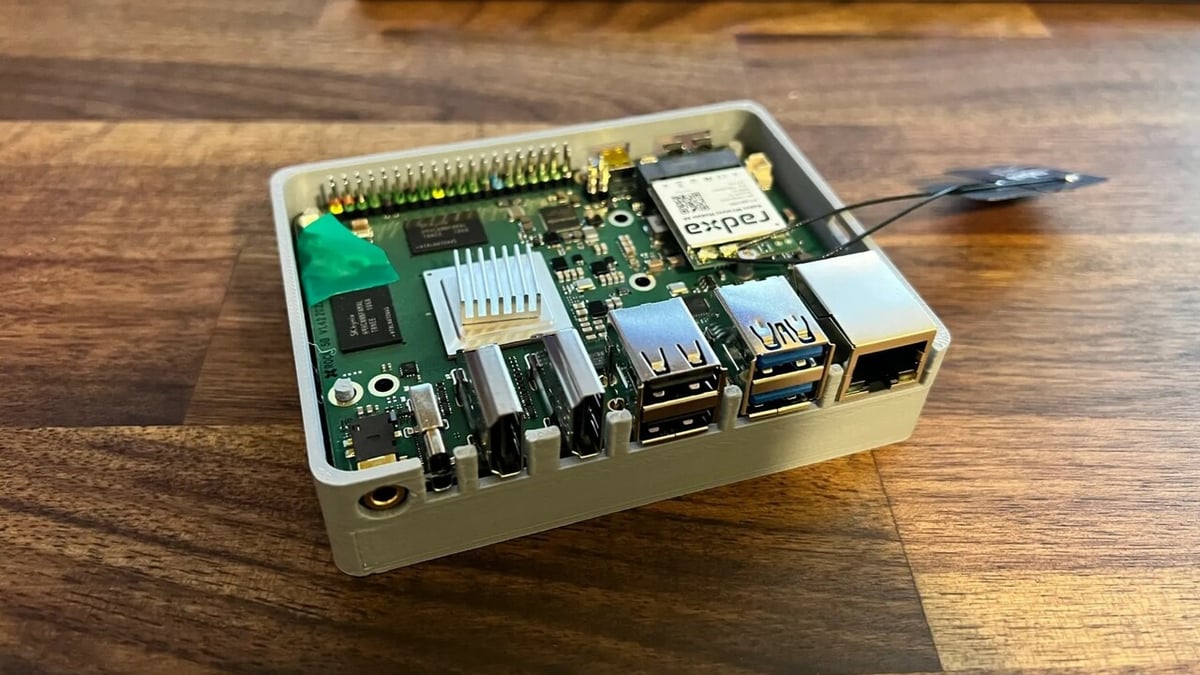
The Radxa Rock 5B is similar to the Orange Pi 5, with the same popular Rockchip RK3588 processor. It has the ubiquitous 40-pin Raspberry Pi GPIO header and is therefore compatible with peripherals that use that header. And while the Rock 5B is significantly more expensive than a Raspberry Pi at around $200, it delivers a lot of power and expansion capabilities for that price.
The Rock 5B has an extraordinary amount of storage capability compared to the Raspberry Pi. Besides the usual SD card slot, it also has an “M Key” M.2 slot on the back for adding an NVMe SSD. This slot is full-fat PCIe Gen 3 x2, so it’s similar enough to the Raspberry Pi 5 that it can be used to connect items like a graphics card with the proper adapter. There’s also an “E Key” M.2 slot on the front for adding, for example, Wi-Fi or Bluetooth cards. This slot would also be useful for projects where some other wireless communication protocol is desired, like Zigbee.
You can add even more storage with the eMMC socket on the back, so that brings the total types of storage media up to three. All this expandable storage might come in handy for, say, a security camera setup where lots of footage needs to be stored onboard.
Overall, the Rock Pi 5B is an upgrade over the Raspberry Pi 5, and should be seriously considered for those who have the budget for it.
- Specs: Rockchip RK3588 8-core processor, up to 16 Gb DDR4 RAM
- Features: Integrated ARM Mali graphics, 2x full-size HDMI outputs, Micro HDMI input, M.2 “E Key” and M.2 “M Key” slots, eMMC socket, 2.5 GB Ethernet with PoE header, USB power delivery 2.0 input, 2x USB 2.0 ports, 2x USB 3.0 ports, 40-pin GPIO header, 3.5-mm audio jack
- Price: ~$200 (8 GB)
Libre Le Potato S905-X-CC
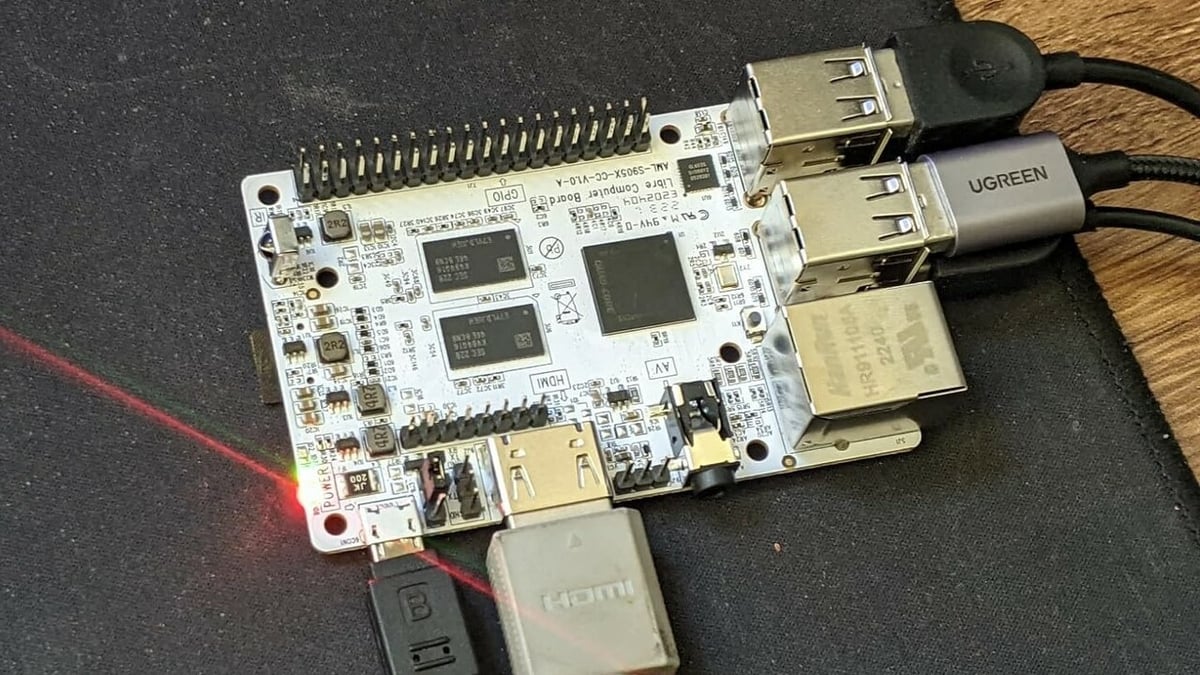
Le Potato came seemingly out of nowhere during the height of the Raspberry Pi shortage, much to the delight of hobbyists. Their offering wasn’t the most powerful SBC out there, but the $35 price tag is aggressive, to say the least. Le Potato provides a pretty good ratio of performance-per-dollar with its 4-core processor, and it’s available with either 1 or 2 GB of DDR3 RAM.
Le Potato has a compatible form factor and pin layout as the Raspberry Pi 2 and 3, providing great compatibility with accessories for said Pi boards. The biggest drawback of Le Potato is that it doesn’t have onboard Wi-Fi, but this can be easily remedied with a cheap USB Wi-Fi dongle. That said, not all Wi-Fi dongles will work with Le Potato, so Libre Computer recommends a specific model.
The low cost of Le Potato is really the selling point here; there are many projects that simply don’t need the RAM of a more powerful board, and just need to run Linux in some form. For example, a weather station that needs to run all the time and log data from sensors, and possibly send that data off to a computer somewhere else. And if you have the means to connect your project via Ethernet, this can be accomplished without shelling out the extra ten dollars for a Wi-Fi dongle.
- Specs: Amlogic S905X 4-core processor, 2 GB DDR3 RAM
- Features: Full-size HDMI port, USB Micro B power input, 3x USB 3.0 ports, 1x USB 2.0 port, 3.5-mm audio jack, eMMC socket, 100 Mb Ethernet, 40-pin GPIO header
- Price: ~$35 (2 GB)
Banana Pi BPI M64
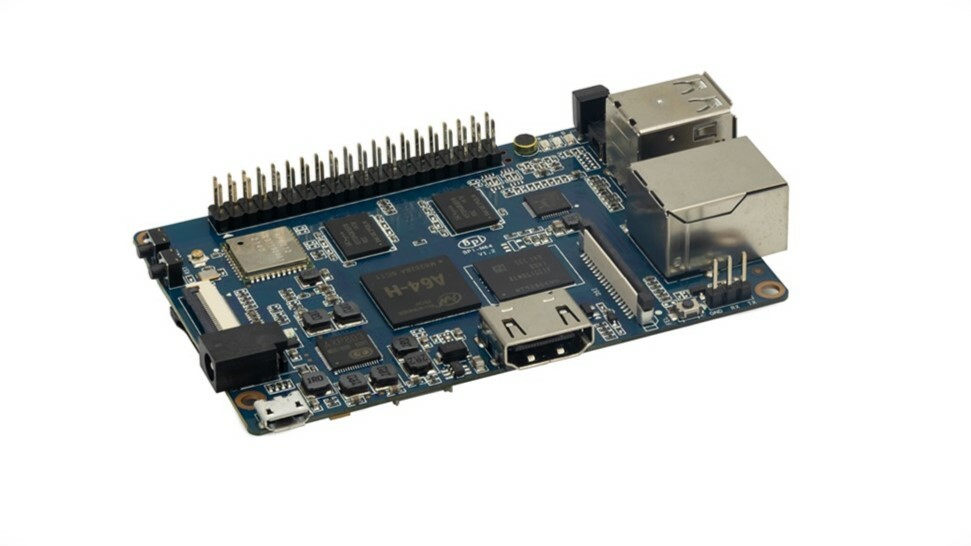
The Banana Pi comes in many different forms, but the BPI M64 is the most similar to the traditional Raspberry Pi form factor. It has an Allwinner A64 4-core ARM processor, 2 GB DDR3 RAM, and that good ol’ 40-pin GPIO header. Unique features include its full-size HDMI out, 3.5-mm audio jack, onboard IR receiver, and, somewhat disappointingly, only two full-size USB-A ports. The IR receiver would make the Banana Pi M64+ useful for an open-source “Smart TV” box, and could be controlled with any universal TV remote.
The M64 also has an onboard 3.7-V lithium battery charging and management circuit, which allows the device to be portable and keeps the RTC active when powered off. The battery port provided is regrettably not a standard connector, which limits what type of battery can be used, and the fact that it only supports a single cell lithium battery limits the power draw and battery life of the device. However, for certain low-power applications, this is a very useful feature from a more accessible SBC that may seal the deal for some.
- Specs: Allwinner A64 4-core processor, 2 GB DDR3 RAM
- Features: 5-V 2A DC barrel jack power input, full-size HDMI port, CSI/MIPI camera connector, DSI/MIPI display connector, Gigabit Ethernet, 2x USB 2.0 ports, USB OTG port, 3.5-mm audio jack, 40-pin GPIO header, integrated microphone, infrared receiver
- Price: ~$60 (2 GB)
BigTreeTech Pi
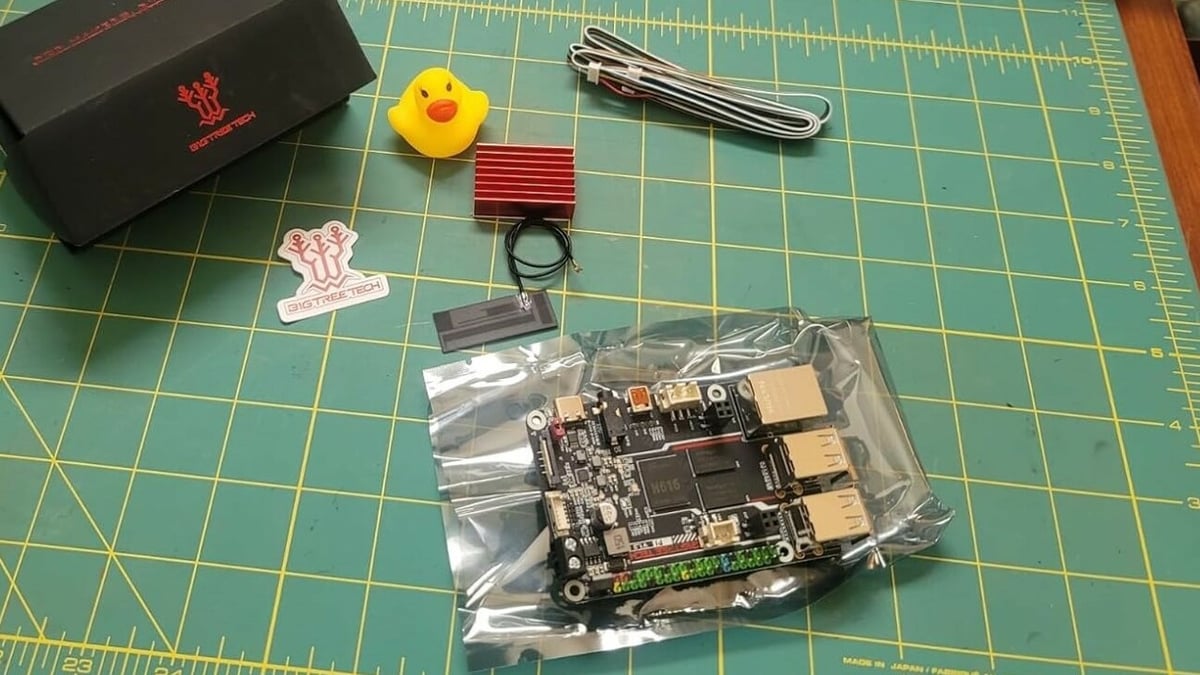
This SBC is a good choice for those that need a Pi just to run Klipper on their 3D printer. The BigTreeTech (BTT) Pi has lots of cool 3D printer-specific features, like the ability to be powered directly from a 12- or 24-V power supply and an integrated CAN bus port. Plus, it comes pre-configured with Klipper firmware. It’s otherwise very similar to a Raspberry Pi 3 or 4, even down to the size, layout, and I/O pins.
The most obvious use case here is a 3D printer, but some of its features may lend themselves to other applications as well. For instance, the onboard voltage regulator (capable of 12- or 24-V input) would allow it to run off a 12-V lead acid battery or a 3- to 6-cell lithium battery, though some external battery charge and management circuitry would be required. Pair that with a solar panel and charge controller, and you have yourself a fully off-the-grid installation. This would lend itself well to a motion triggered game camera for wildlife research, or perhaps a camera-equipped wild bird feeder to capture images of your flighted visitors.
- Specs: Allwinner H616 processor, 1 GB DDR3L
- Features: 4x USB 2.0 ports, USB Type-C power input or 12-24-V DC power input screw terminals, 100 Mb Ethernet, integrated CAN bus port, dedicated ADXL345 accelerometer port, 3.5-mm audio jack, infrared receiver, 2-pin PWM fan port
- Price: ~$40 (1 GB)
License: The text of "Top 5: The Best Raspberry Pi 5 Alternatives in 2024" by All3DP is licensed under a Creative Commons Attribution 4.0 International License.
CERTAIN CONTENT THAT APPEARS ON THIS SITE COMES FROM AMAZON. THIS CONTENT IS PROVIDED ‘AS IS’ AND IS SUBJECT TO CHANGE OR REMOVAL AT ANY TIME.

